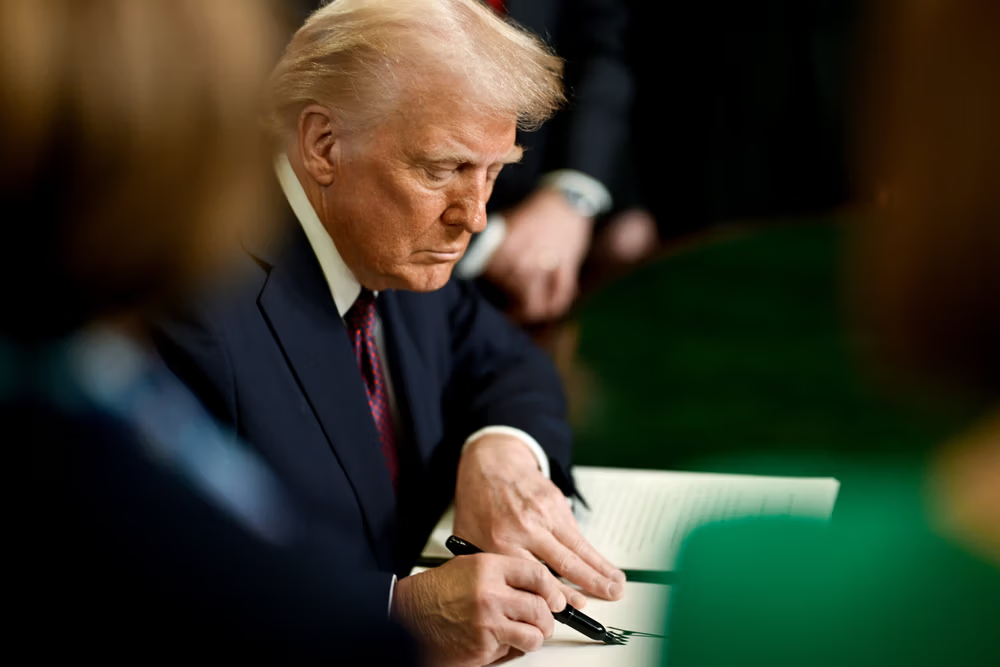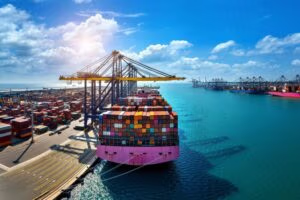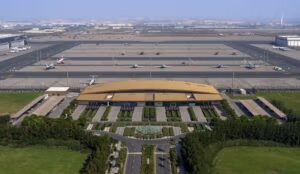Just hours before his long-touted deadline, U.S. President Donald Trump rolled out a sweeping overhaul of global tariff rates, sparking praise, anxiety, and defiance from capitals around the world.
From Southeast Asia to Scandinavia, Trump’s “reciprocal tariff” regime is triggering a tectonic shift in trade diplomacy, with new winners, fresh uncertainties, and global economic consequences.
On Thursday, the Trump administration updated its “reciprocal” tariff framework, adjusting rates for dozens of countries ahead of the anticipated August 1 deadline. While tariffs were initially expected to go into effect at midnight, a White House official told CNBC-TV18 the duties would now begin August 7, a brief delay that gives partners a final window for negotiation.
Among the most striking new measures: a 40% tariff on all transshipped goods, products rerouted through third countries to dodge U.S. duties, and a baseline 10% duty on all nations not explicitly listed in the latest order. The directive builds on an earlier executive order issued in April and marks one of Trump’s most aggressive trade actions to date.
Trump emphasized the urgency of the moment in a post on Wednesday: “THE AUGUST FIRST DEADLINE IS THE AUGUST FIRST DEADLINE — IT STANDS STRONG, AND WILL NOT BE EXTENDED. A BIG DAY FOR AMERICA!!!”
Still, as of Friday, countries were scrambling to make sense of the revised list. Here’s how leaders across the globe are reacting:
Cambodia:
Prime Minister Hun Manet welcomed the decision, calling it “good news” for the Cambodian economy. The country saw a dramatic cut in its tariff rate, down to 19% from 49%. Manet also thanked Trump for mediating a recent military standoff between Cambodia and Thailand.
Thailand:
Finance Minister Pichai Chunhavajira said the 19% rate for Thailand reflects its strong partnership with the U.S., adding that it will help the country stay globally competitive. However, he acknowledged the impact on entrepreneurs and farmers and outlined a support plan that includes soft loans and subsidies.
Taiwan:
President Lai Ching-te confirmed Taiwan was hit with a 20% temporary tariff, down from the 32% announced in April. Lai noted that negotiations were ongoing and that a final deal could lead to even lower rates. He said discussions would continue on broader issues, including national security-linked Section 232 tariffs.
Malaysia:
Prime Minister Anwar Ibrahim said ahead of the announcement that the expected rate would not “burden our economy.” The final tariff, 19%, down from 25%, supported that view. Anwar also confirmed Trump would attend the 47th ASEAN Summit in Malaysia this October, marking a rare diplomatic engagement.
Japan:
Japan managed to strike a deal earlier, securing a reduction to 15% from 25%, particularly protecting its auto exports. Chief Cabinet Secretary Yoshimasa Hayashi said the move would reduce economic uncertainty and called for continued talks to further ease auto tariffs.
India:
India, without a finalized deal, faces a 25% tariff, unchanged from Wednesday’s announcement. Commerce Minister Piyush Goel told parliament that negotiations with Washington are ongoing, with the aim of striking a trade agreement by October–November. He emphasized protection for farmers and small businesses.
Australia:
Australia’s tariff remains at 10%, one of the lowest. Trade Minister Don Farrell called it a “vindication” of calm diplomacy. He said the move made Australian goods more competitive in the U.S. and was a strong endorsement of the relationship.
New Zealand:
Facing an increase from 10% to 15%, Trade Minister Todd McClay said the hike would start to significantly impact exporters. While businesses had been able to absorb earlier duties, he warned that 15% could force price changes or cut into margins. Talks with the U.S., he said, would continue.
Norway:
Tariffs remain at 15%, the same as the earlier April rate. Trade Minister Cecilie Myrseth called the negotiations with the U.S. “constructive yet difficult” and emphasized Norway’s continued desire for a mutually agreed solution.
Switzerland:
Switzerland now faces a steep 39% tariff. In a statement, the federal council expressed “great regret” that the U.S. chose to impose the duty despite “constructive” talks. The government said it would assess next steps and remained committed to pursuing a diplomatic solution.
Canada:
In the most severe escalation among allies, Canada was slapped with a 35% tariff, effective immediately. Goods under the USMCA trade deal are exempt, but the move further strains U.S.–Canada relations.
Canadian Prime Minister Mark Carney responded with disappointment:
“While we will continue to negotiate with the United States on our trading relationship, the Canadian government is laser focused on what we can control: building Canada strong.” He also rejected the U.S.’s justification linking the tariffs to drug trafficking.
As the world digests Trump’s latest volley of tariffs, the geopolitical and economic consequences are still unfolding. Countries that avoided the harshest penalties are hailing diplomacy, while others brace for economic blowback.
Whether the Aug. 7 implementation date holds — and whether more bilateral deals can be struck — may determine just how far-reaching this new era of “reciprocal tariffs” will be.
If this is the opening salvo in Trump’s next phase of trade policy, the world may be in for another round of high-stakes economic brinkmanship.






